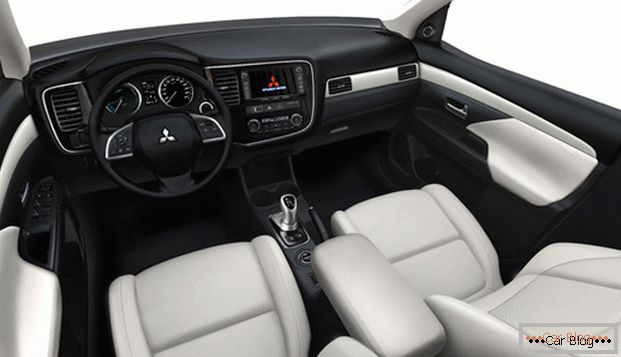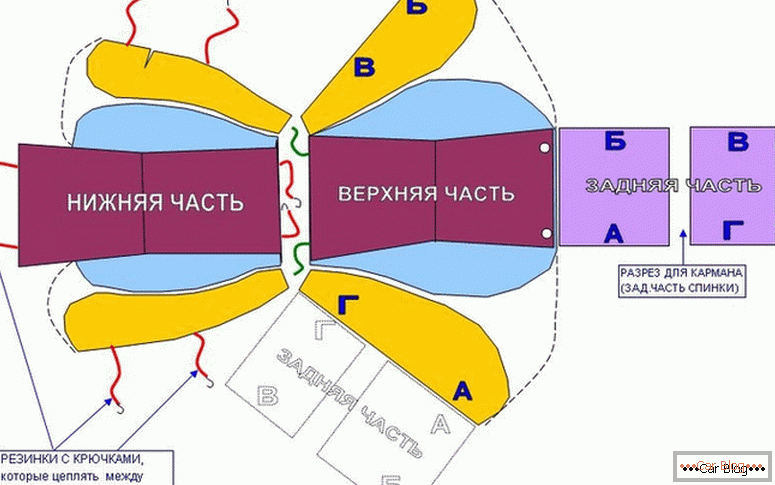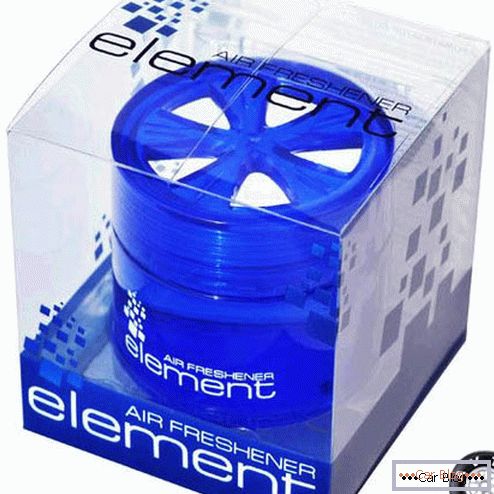Until 1999 Mitsubishi Pajero They were real frame SUVs, they had a rear axle beam, distributed fuel injection. And after 1999, the third generation of the Pajero came out, in which a bearing body instead of a frame was introduced, an independent suspension and direct fuel injection.
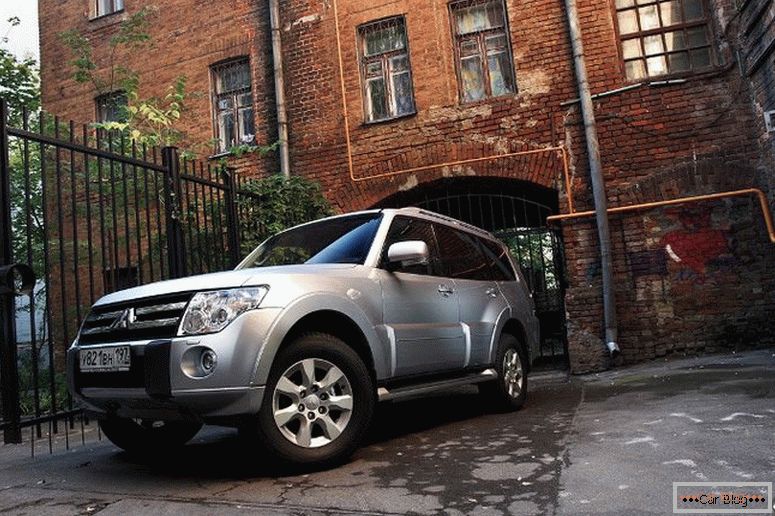
How much all these innovations, at that time, were reflected in long-lived survival - now we will find out.
Bearing body the Mitsubishi Pajero turned out to be very durable, it has a developed system of side members, so the car easily overcomes the lack of roads and the body is not shaken by this ride. But when buying a car with mileage, you need to very carefully check whether the car was not in an accident, because the body structure is quite complicated and its geometry is not easy to recover after a serious accident. Sure to check when buying wheel alignment angles.
If you buy a Pajero, which is not involved in accidents, then it is possible not to worry about the long life of the body, because it is galvanized, so rust will not appear on it. Corrosion may appear on tailgate - under the bar, illuminating the number of cars and in the window opening. Air conditioner pipes may suffer from reagent winters because they are made of aluminum, as well as wipers, wiring, lighting thresholds and external elements of chrome. As for the rest of the electrics on the body, it does not fail, despite all the difficulty in technical terms.
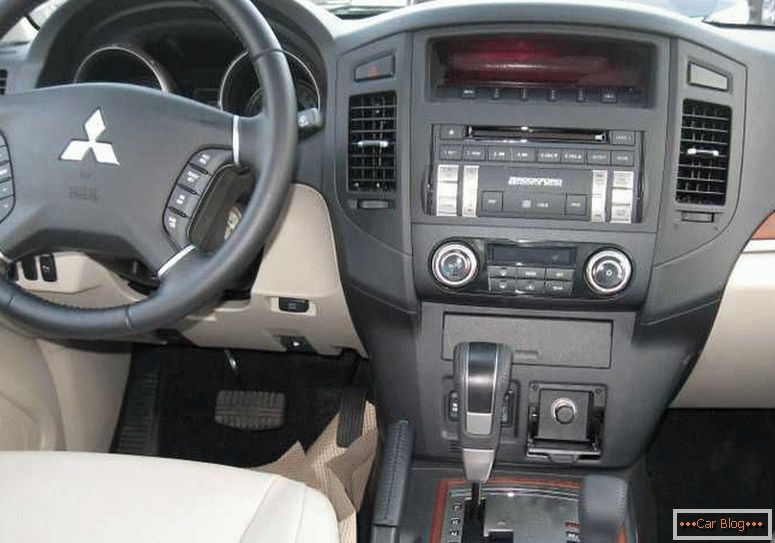
Salon
The interior uses materials not the best quality. Leather on the seats It indicates that it is not expensive, but is used on the sides of leatherette The front seats themselves are equipped with a spring suspension, which adjusts the rigidity, usually this solution is used on trucks. But in general, the interior looks decent and after such a considerable amount of time, it almost does not creak.
Engines
The only thing that can create problems is demanding engines that need to fill in high-quality fuel, and in Russia there are cases that it is possible to fill in not enough high-quality gasoline or diesel. Moreover, for the Russian market, dealers sold only Pajero configurations with direct fuel injection: petrol V6 GDI, which amounts to 3.5 liters and diesel engines with a volume of 3.2 liters and 4 cylinders.

Best showed himself турбодизель with a volume of 3.2 liters, its design is about the same as that of the previous generation diesel Pajero, although there was less volume - 2.8 liters. You can only be afraid of cars, the early years of release - 1999-2000 years, they have after 80,000 km. could burn pistons due to problems in the fuel equipment. But this defect was corrected, and diesel cars, younger than 2000, are deprived of any problems with the engine.
Даже российское горючее они хорошо переваривают, главное, не допускать, чтобы вода попадал в бак, потому что fuel pump ее не любит. Если все хорошо, то fuel pump высокого давления спокойно выдерживает 200000 км. Раньше может выйти из строя, установленный в баке, подкачивающий насос, который стоит 400 долларов за новый. Новый fuel pump высокого давления стоит 4500 долларов, но его менять обычно не приходится, достаточно сделать просто ремонт, который обойдется примерно в 900 долларов.
After 150,000 km. you need to pay special attention to the engine, because it's time replace fuel injectors, each of which costs 130 dollars, and also it is desirable to change the timing chain so that it does not stretch. If there is an unusual noise under the valve cover, it means that the chain is stretched and breaks, destroying the tensioner and cutting off the dampeners. If you do not make a replacement chain, you can get a lot of money - about $ 4,500 for the repair of the cylinder head. But in general, the engine is reliable, it requires only once every 10,000 km. change the oil and filters. It is also necessary with the same regularity to clean the intake manifold from the accumulated soot.
Recommended article: Toyota Land Cruiser - an unkillable off-road conqueror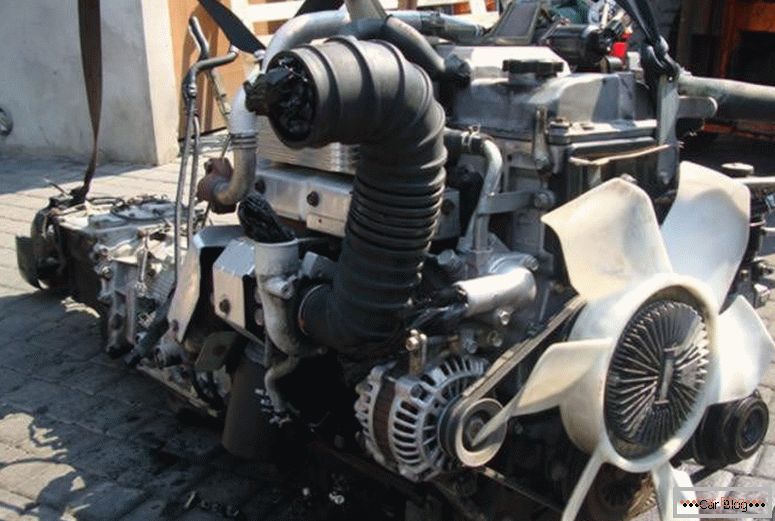
There are still modifications with diesel engine объемом в 2,5 литров, но они доступны на территории Японии, такой двигатель более надежный и очень неприхотливый в плане качества топлива. К этому мотору обычно идет трансмиссия Easy Select, которая тоже отличается надежностью. AT таком автомобиле все обслуживание сводится только к регулярной замене ремня балансирных валов, масла и фильтров.
But бензиновый мотор V6 с объемом в 3,5 литров – достаточно капризный, его fuel pump высокого давления еще больше не любит грязи и воды в бензине, и в отличие от дизельного мотора – его отремонтировать нельзя, а новый ТНATД стоит 900 долларов. Определить, что насосу скоро придет конец можно по такому признаку: на средних и высоких оборотах теряется тяга, потому что забилась фильтр-сетка в насосе. Также если обороты на холостом ходу начнут плавать, это тоже может являться сигналом к тому, что ТНATД скоро придется менять.
Even if you refuel at expensive and proven gas stations, this does not mean that there will be no problems with the sensitive pump; fine filter into the fuel system, then the problem will be solved. Also sensitive to the gasoline Pajero nozzles, thanks to which, after 100 thousand km. The engine may be unstable. You can clean the nozzles, it happens that this is enough, but in advanced cases, you have to change the old nozzles for new ones, a set of which costs $ 2500.
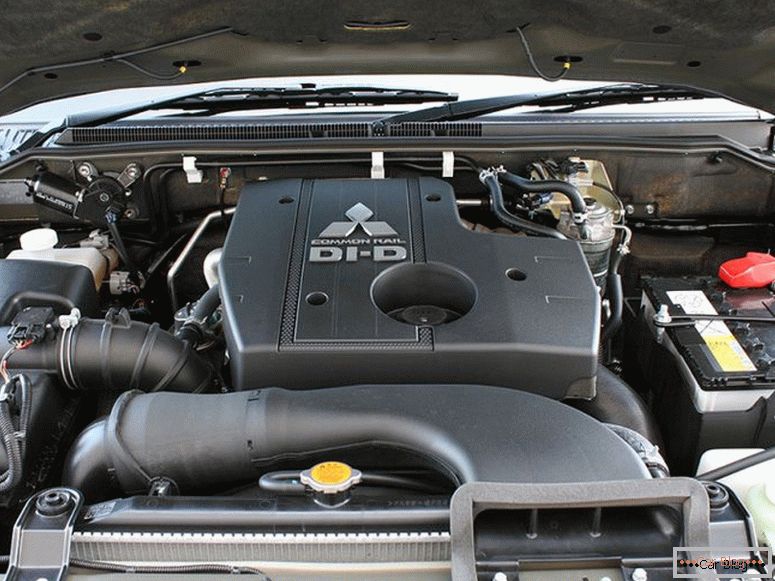
So, if you buy the Pajero gasoline, you need to be sure that there is clean and high-quality gasoline in your city, because bad gasoline will also quickly destroy spark plugs, and it’s not easy to change them - in order to change the plugs from the motor, so you have to spend extra work. But in fact, there are no special problems in this, because already after 50,000 km. anyway, the collector will have to be removed to clean the engine.
Если машина ездит часто in traffic jams на малых оборотах, то это приводит к тому, что во впускном тракте, на клапанах и в корпусе дроссельной заслонки будет скапливаться сажа в больших количествах. Это характерная неприятная особенность двигателей, работающих на бензине, с непосредственным впрыском и EGR system. By the way, it can be done so that this problem will rarely be disturbing - you just need to periodically give the engine a good gas - at high speeds it can be slightly chased so that various dirt will come out.
By the way, in the US Pajero is sold under a different name - MonteroIn the American versions, the 6G74 engine is installed, which has a distributed injection. For this engine, the 92nd gasoline is a common thing, it easily digests it without any consequences. The owners of American Montero do not know any worries, except for changing the timing belt along with rollers every 90,000 km, which draws on $ 400 plus work. And also, after about 125,000 km. update spark plugs, neutralizer and camshaft position sensor.

In addition, for the US market there is an opportunity to buy Montero 3 generations in a complete set with a reliable engine from the second generation - a 3-liter 6-cylinder 6G72, such modifications were supplied even to the United Arab Emirates. After 2003, a similar 6G75 engine, the volume of which is 3.8 liters, was transferred to the new Pajero of the 4th generation without any major modifications.
Recommended article: The Japanese carmaker Honda in the past few days already represents the third new product.Transmission
In the US versions are installed only automatic boxes, and for other countries there is a complete set with a 5-step mechanics. Both transmissions are distinguished by reliability and long service life, if you change the transmission oil every 45-60 thousand km. But the mechanics are considered less costly, because after 200,000 km. In the automatic box, the hydraulic unit may fail, the new one is not cheap - $ 2,800.
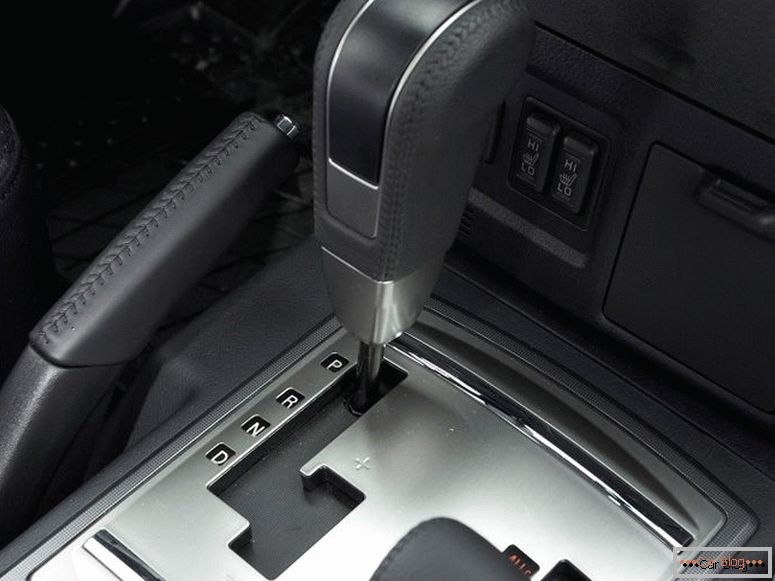
Since Mitsubishi Pajero is an SUV, it has transfer case SuperSelect II, although it is not famous for reliability, but more on that later. Super Select II provides four-wheel drive, it has a lockable viscous coupling with asymmetrical center differential, there is a choice between full and rear-wheel drive. But this transfer case may fail due to problems with the electronic mode switching, which is controlled by the selector joystick. And all because under the bottom of the wiring of the system are located and the sensors, when moisture gets on them, failures can occur and the SUV will remain without all-wheel drive. And if this happens while driving on the road, it will be very difficult.
Approximately the same problems were in the previous transfer box SuperSelect, which was installed on the Pajero back in 1991.
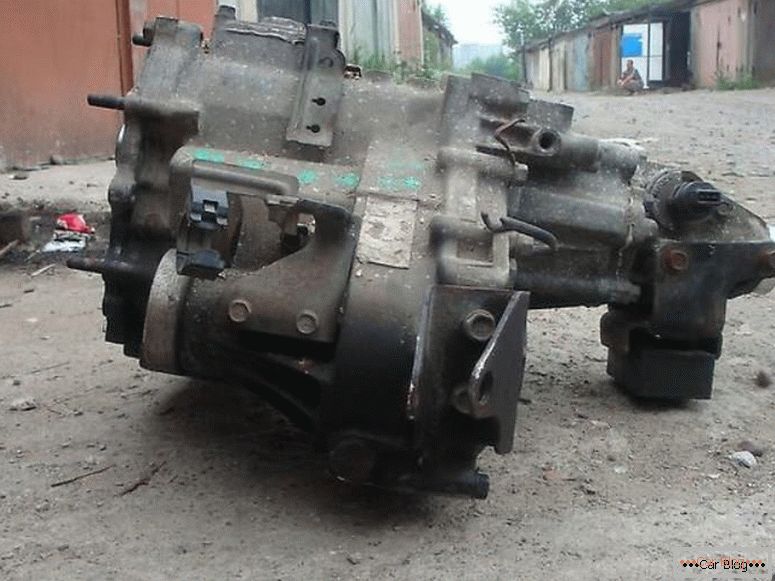
Suspension
AT to go there is only one cross, it will last a long time, provided that it will be lubricated not only during the technical inspection, but after each serious off-road trip. All other joints of cardan shafts are CV joints. Front wheel bearings are not well protected from slush, and even if they are constantly lubricated, it does not help, they have to be changed in assembly with the hub after a certain number of kilometers, it will cost $ 330.
Suspension at Pajero 3rd generation independent, it serves for a long time if you drive on normal roads, but it wears out faster from off-road driving. If you go quietly and carefully, then 100,000 km. suspension will not require attention. After this run, we will have to upgrade stabilizers, which cost about $ 80 and bushings for them - $ 10 each.

After 130,000 km. usually require replacement shock absorberswhich cost $ 200 for the rear and 300 for the front, as well as steering tips for $ 60. After 150 thousand km. it is time to replace the front levers and silent blocks, it will cost $ 540 for 2 levers and $ 800 for 2 silent blocks. And after 160 thousand km. it will be necessary to change the ball bearings, each of which costs about $ 80. On the rear multi-link suspension parts last longer: the rear silent blocks will need to be changed after 200,000 km. Fully bust back suspension will cost $ 1,000.
For those who like to mix dirt and subdue off-road, you have to revise the rear suspension a little earlier - after about 120,000 km. Riding off-road requires costs, in addition, active off-road driving will necessarily require the replacement of the steering mechanism, which will pull on 1900 dollars.
On many Pajero, there is such a disease that eccentric bolts, which can adjust the angles of the front and rear wheels, after a few years together with the silent blocks are connected so strongly that they cannot be separated and you have to cut the levers, which is not a very pleasant experience, therefore, to avoid such a situation, it is necessary in advance for prevention, these bolts lubricate.

Brakes quite reliable and depending on the ride, their costs may vary. If you quickly drive a loaded car, then after about 25 thousand km. need to change pads and discs. By the way, each disc will cost $ 150. The Pajero of the early years of release in the brake system was unstable, the hydroaccumulator worked, the pedal was pressed gently, before buying it is necessary to check whether it was replaced under warranty during a revocable company, because the new hydroaccumulator would pull for $ 2500. When replacing the pads, it is also worth lubricating the brake guides because they rust over time.
Recommended article: A few tips on how to remove the smell of fumes from the mouthIn general, the 3rd generation Pajero is a fairly reliable car, but it has a competitor - Toyota Land Cruiser Prado 120, which is considered more reliable. But the Mitsubishi jeep is about 400,000 rubles cheaper. For those who want to save, it makes sense to take the Pajero, but it is best to take the American version, with engines of 3.5 or 3.8 liters, the main thing before buying to check in what condition the engine, transmission and suspension.
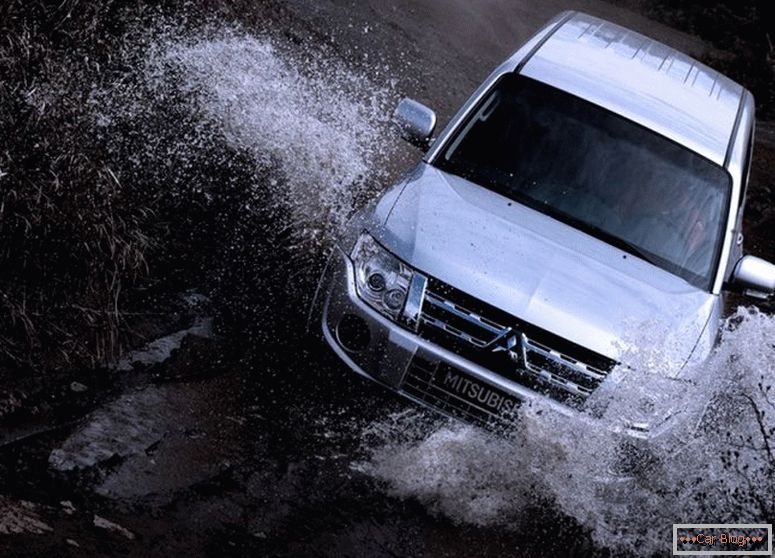
Occupations from Mitsubishi Pajero
When you go за рулем дизельной версии Паджеро с механической коробкой передач по городским пробкам, понимаешь, что этому джипу здесь делать нечего, первые 2 передачи короткие, поэтому езда по пробкам очень похожа на дерготню. AT бензиновой версии с автоматической коробкой дела in traffic jams things are better, the machine behaves smoothly and smooths jerks. But the abrupt maneuvers the automatic box does not perform very well, there is some thoughtfulness, so you should go quietly and without fuss around the city to the Pajero.
But on the road That diesel, that gasoline Pajero show very good results. The 3rd and 4th gears pull well, they can dramatically pick up speed as soon as you push the gas pedal seriously. In fifth gear, it is also very pleasant to take the highway in the range from 40 to 160 km / h. And between 90 and 130 km / h the car has such powerful traction that it can easily and quickly overtake. The automatic transmission on the petrol version is a little tupit, so not always conceived maneuvers can be carried out, but this feature can get used to over time. It is also possible to use the manual mode of the box, if there is such a need to make a sharp overtaking.
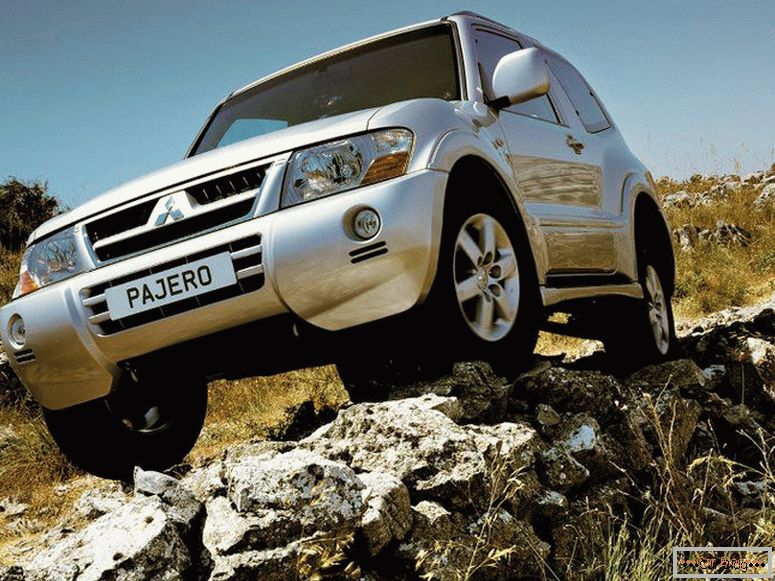
When you go on a winding road, then it is necessary to slow down on the Pajero, thanks to the high-profile rubber, the car takes slightly away, the suspension is soft, the banks are big, so there is no particular desire to drive fast along the serpentine road.
But настоящая среда для Паджеро – dirt road with rut and shallow pits. Here, the long-stroke and soft suspension is excellent; you can drive a bad road at a high enough speed without sacrificing comfort. Inside, the driver and passengers are pleasantly swinging, but there are no hard blows.
When the car drives in serious off-road, on the sand, for example, the diesel Pajero shows all its strengths: high torque, allowing you to go inside. Petrol modification with a gun feels worse on the roads: either it is stalling or stalling. But for a driver with little experience on the road, the torque converter helps a lot, but on very difficult sections the petrol version with a gun loses the diesel version with a manual gearbox. But of course, a lot depends on the experience of off-road driving.
How to choose a used car Mitsubishi Pajero 3 in all details is set out in the video, which you will find just below:

